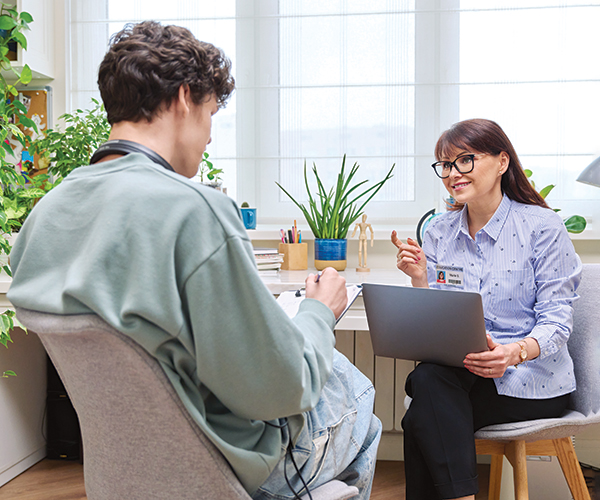Co-Teaching Helps Cleveland Educators Provide a More Comprehensive Education
by Kristen Hampshire | Mar. 10, 2023 | 1:00 PM

Courtesy University School
Cortney Dargaj works in tandem with associate teacher Aubrey Cornwell in her second-grade classroom at University School — one works the room, visiting with small groups to answer questions. The other leads a lesson. They trade off, collaborating with a natural synergy that brings connectivity, support and different perspectives to the learning experience.
It’s twice as nice.
For one, they can model problem-solving. “If we can purposely make a mistake and say to the other teacher, ‘I wonder how we can fix it?’ it shows students there is room for growth from failure and mistakes,” Dargaj says. “It gives them an overall much richer experience in the classroom, and then we hear students repeating that language.”
Students benefit from personalized instruction since teachers can tag team
Parents gain double the perspective on how their child is performing in the classroom and can more easily access teachers for feedback on behavior, grades and more. Plus, co-teachers can brainstorm lesson plans, reflect on what worked and grow together as professionals.
“The students have an opportunity to thrive because there is always someone there to support you,” says Lisa Cummings, University School’s Lower School director. “When you have multiple eyes in the room, you gain different perspectives.”
Meeting Students Where They Are
University School’s team teaching structure is targeted toward students in the Lower School, and Cummings explains that especially during early learning years, students are at different developmental stages. “Some students are readers and others are still looking at letters and letter sounds,” she says. “There is a lot of scaffolding that is needed for the youngest learners, so we have an opportunity to meet them at their various levels.”
“Having an additional teacher in the room makes small groups even more meaningful and scaffolded,” Cummings says.
Especially after home and hybrid schooling amid COVID-19, the youngest students who missed out on a “normal” school year might not have experienced the educational push from online learning, whether that was through Zoom lessons with the teacher or school work on a digital platform. So, having two teachers help close the gap can boost students who have fallen behind in the early educational standards. “There were students who continued to excel and others who were more isolated,” she points out. “Those little guys who missed pre-K or kindergarten are already coming in behind on social skills and having two teachers is a nice way to address those on top of academics,” Dargaj says.
Introducing Different Perspectives
“None of us comes into a room with the same personality,” Cummings points out. “You can get a student who completely connects with one teacher because she has a great sense of humor, and maybe the other teacher is an empathetic and soft-spoken individual.”
Team teaching brings a sense of balance to a classroom’s culture and fosters natural relationships. Plus, teachers pick up on different nuances and behaviors from each of their students, which brings an even more well-rounded perspective when the time comes for parent conferences. “They both have insight to share, adding anecdotes or examples of what they witness for parents to consider,” Dargaj says.
Refreshing the Room
“Two heads are better than one,” Dargaj says of lesson planning, and “rich conversations that I have with my co-teacher are beyond what I could come up with on my own.” She says she’s a better teacher for it. “And it’s exciting to learn from each other’s styles because you can get set in your ways. We learn from each other.”
For students, this keeps lessons fresh and engaging enough to keep focus intact. “Co-teaching naturally lends itself to students being more engaged,” Dargaj adds. “It’s not as easy for students to get off track when one is teaching and the other is walking around and hands-on.”
And again, there’s modeling—the nonverbal teaching—that occurs when two professionals are interacting and students can watch and learn. “It really builds character education for them,” Dargaj says. “Not only do we talk about it and teach about it, we show it to them. They see us being respectful to each other and bouncing ideas off of each other.”
See how Greater Cleveland Schools are helping students receive sensory education
Get ahead of the weekend by signing up for our free weekly “In the CLE” newsletter — your guide to fun throughout The Land. Arriving in your inbox every Wednesday, this weekend to-do list fills you in on everything from concerts to museum exhibits — and more. Click here to subscribe.
Trending
-
1
-
2
-
3
-
4
-
5










